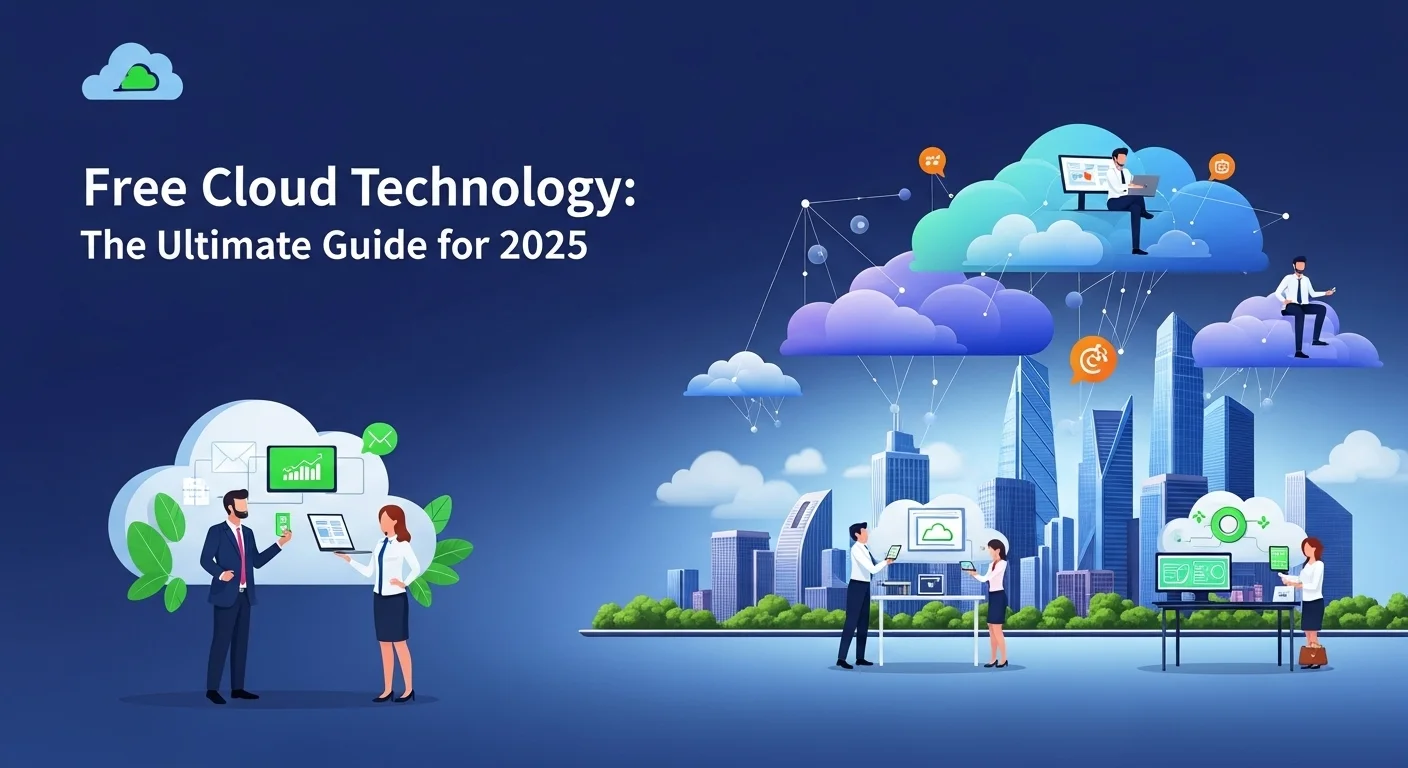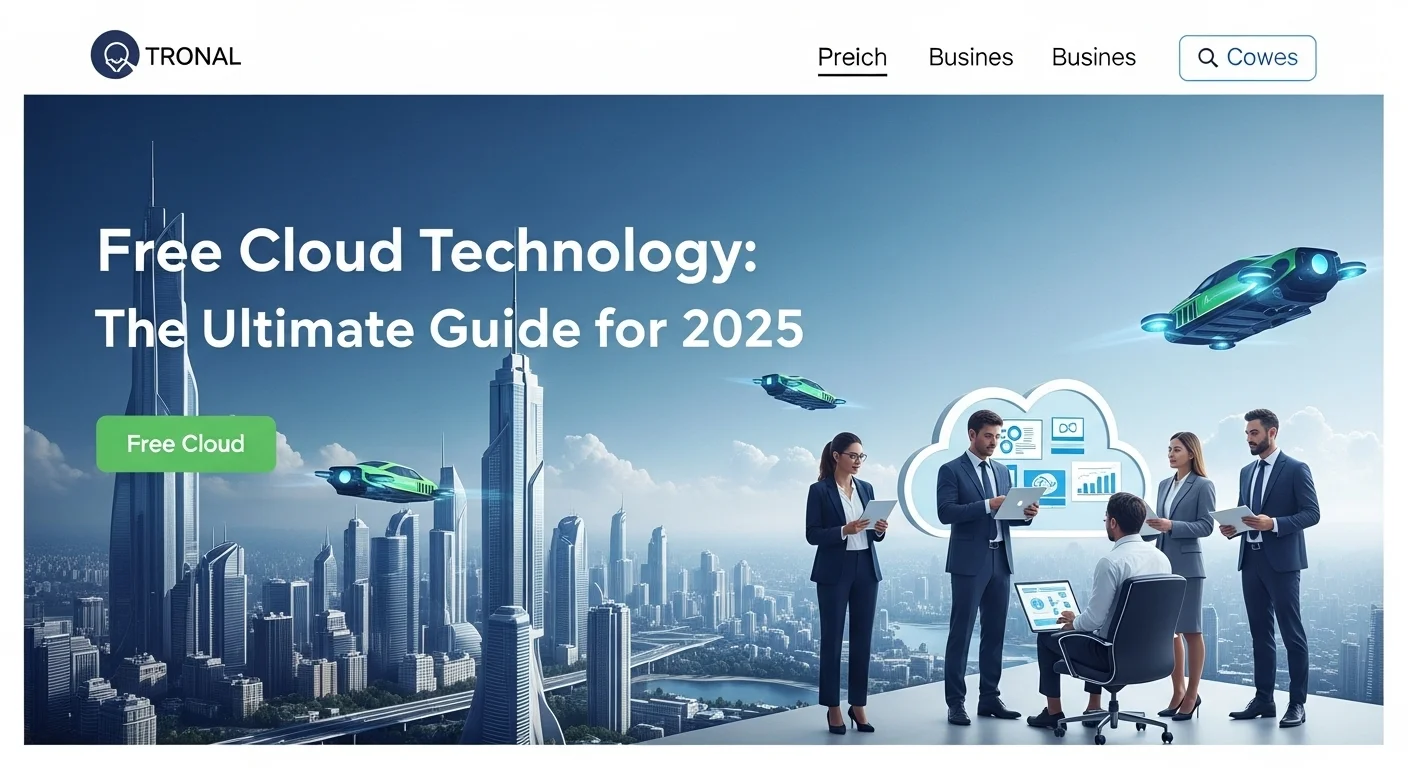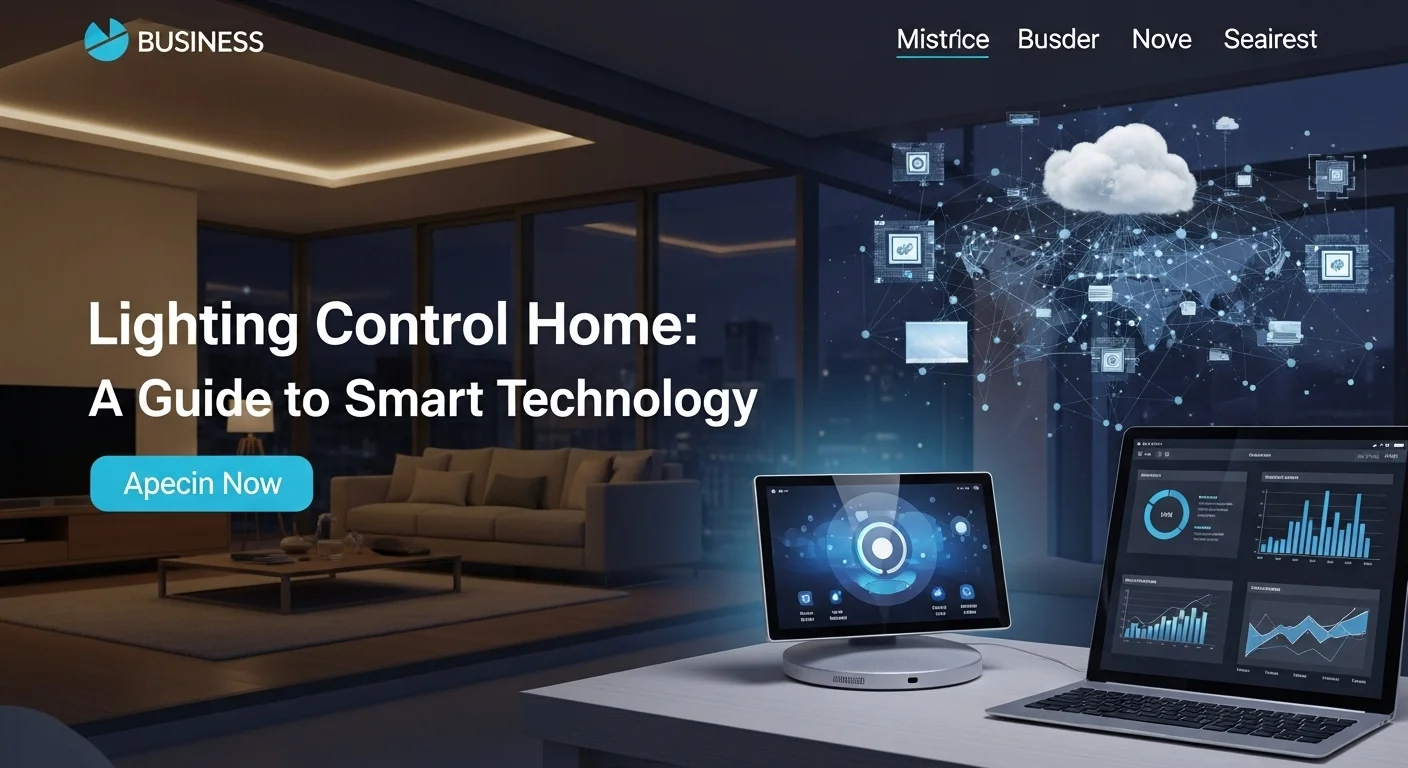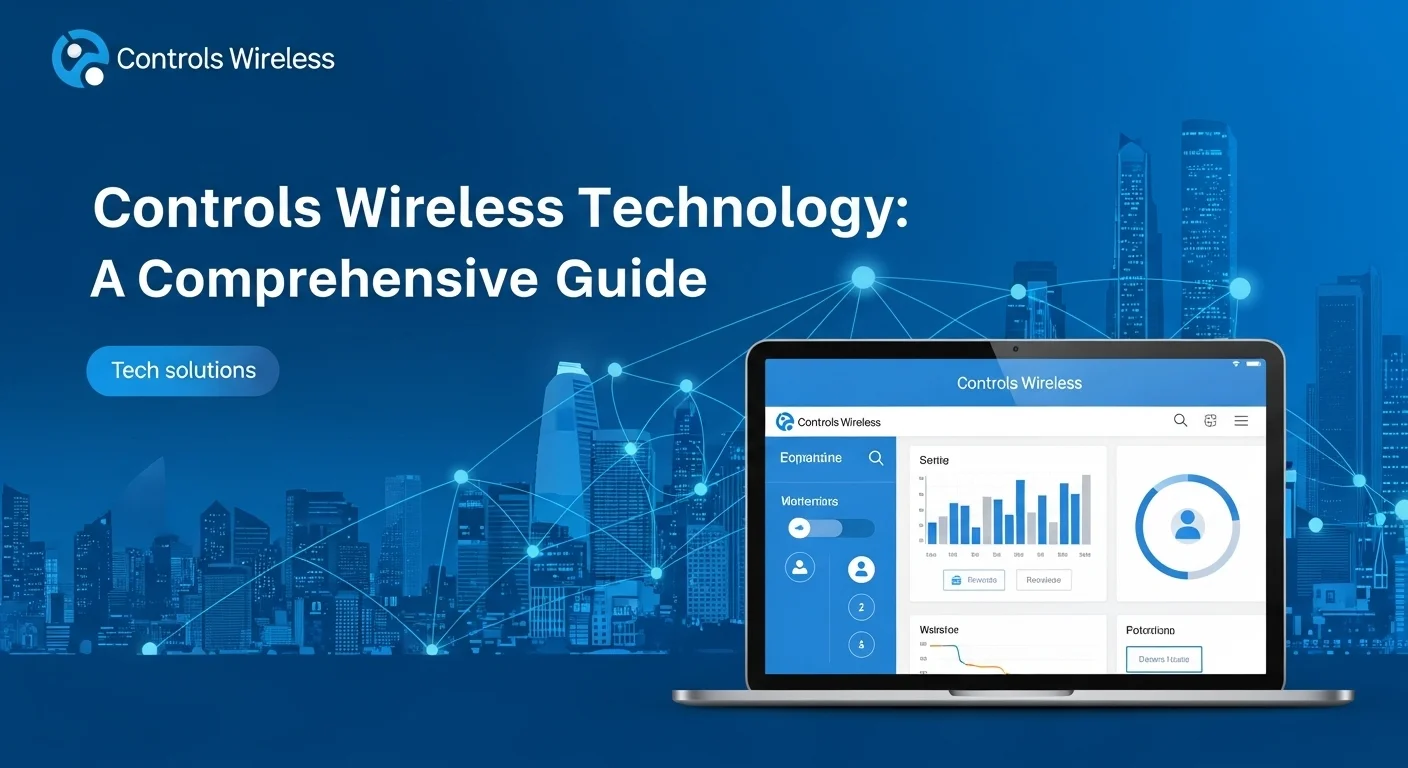Free Cloud: My Practical Guide to Building Your Projects for Free in 2025

Executive Summary
Ever dreamed of launching a website, an app, or a complex tech project with absolutely no budget? I'm here to tell you that it's not a dream—it's the reality of 'Free Cloud' technology. For years, I've been helping developers, startups, and even established companies tap into the incredible power of free services offered by giants like AWS, Google Cloud, and Azure. This isn't just about free trials; it's about permanent, 'always-free' resources that can power your ideas indefinitely. In this guide, I'll walk you through what 'free' truly means in the cloud, show you how to set up your own free cloud server or even a cloud desktop, and help you choose the best platform for your needs. By the time you're done reading, you'll have the knowledge to turn your vision into reality, all by harnessing the power of the free cloud.
Table of Contents
Table of Contents
What is Free Cloud and Why It Matters in Technology?
In my early days as a developer, getting my hands on enterprise-grade infrastructure was a distant dream, locked behind hefty price tags. Today, that barrier is gone. The concept of 'Free Cloud' has completely reshaped the tech world by giving us access to powerful servers, databases, and networks over the internet without costing a dime upfront. At its heart, this is about democratizing technology. It's a strategic move by the big players to lower the entry barrier, sparking innovation from every corner of the globe. For anyone in tech, from a student just starting out to a seasoned pro testing a new app, understanding these free offerings is no longer optional—it's a massive advantage. The real magic of free cloud technology is its ability to make powerful resources accessible to everyone. I remember when launching a simple web service required a significant investment in servers and staff. Now, thanks to the best free cloud computing services, anyone with an idea can launch a server, a database, and an application to a global audience in minutes. It has leveled the playing field, allowing tiny startups to innovate right alongside corporate giants.
Deconstructing 'Free': Tiers, Trials, and Always-Free Models
When I talk about 'free cloud,' it's crucial to know it comes in a few flavors. The most common is the 'Free Tier,' which has two main styles. First, you have the 12-Month Free Trial, which you'll see from providers like Amazon Web Services (AWS) and Microsoft Azure. This gives you a generous allowance of their most popular services for a year, letting you experiment with their full toolkit. Think of it as an extended test drive. Once the year is up or you go over the limits, you start paying standard rates. The second, and in my opinion, the most powerful type, is the 'Always Free' model. Tech giants like AWS, Google Cloud Platform (GCP), and Oracle Cloud Infrastructure (OCI) offer a specific set of services that are free forever, as long as you stay within the monthly limits. These aren't just trials; they are permanent resources. This is where the true power of a free cloud computing platform lies. I've built countless personal projects and small applications on these tiers. For instance, you could run a small blog using a low-power virtual machine for free cloud server hosting, a small database, and a serverless function—all without ever seeing a bill. It's a game-changer for any project that needs to run continuously on a small scale.
The Technological Impact: Fueling Innovation and Learning
The availability of cloud computing services free of charge has created a tidal wave of change. For developers and students, it's the ultimate sandbox. I've seen aspiring engineers gain real-world, hands-on experience with top-tier tools without any financial risk. It's the perfect way to study for certifications, build a killer portfolio, and experiment with advanced tech like AI, serverless, and containers. This practical access is closing the skills gap in our industry at an incredible pace. For startups, the free cloud is a lifeline. It lets them build and test their Minimum Viable Product (MVP) with zero infrastructure cost, which de-risks the entire venture. I once advised a small team that wanted to launch a SaaS product. They used a free cloud computing platform to host their entire application. They only started paying once their user base grew and demanded more resources. That ability to scale seamlessly from free to paid as your business succeeds is one of the biggest benefits.
Exploring Core Free Services: From Servers to Desktops
You'd be surprised by the range of services you can get for free. The cornerstone is free cloud server hosting. Providers like AWS (with its EC2 t2.micro or t4g.small instances), GCP (with its e2-micro VM), and Oracle (with its powerful Ampere A1 Compute instances) all offer virtual machines that can run 24/7 on the always-free tier. I've used these to host everything from websites and mobile app backends to personal blogs. They are the workhorses of the free cloud. Beyond servers, many platforms give you free databases (SQL and NoSQL), object storage for files, content delivery networks (CDNs) to make your sites faster, and serverless functions with millions of free requests per month. A lesser-known but fascinating option is the free cloud desktop. While a fully managed, always-free virtual desktop is rare, you can easily build one yourself by installing a graphical user interface (GUI) on a free-tier virtual machine. I've done this to create a consistent coding environment that I can access from any device with an internet connection. By combining these free components creatively, you can build incredibly sophisticated systems. The real skill is in understanding the limits and designing your solution to work brilliantly within them.

My Complete Guide to Free Cloud for Tech and Business
Diving into the world of free cloud services means knowing what each major provider truly brings to the table. They all have their strengths, quirks, and unique definitions of 'free.' If you're looking to get the most value, a solid comparison is non-negotiable. I'm going to break down the free tiers from the big four—Amazon Web Services (AWS), Google Cloud Platform (GCP), Microsoft Azure, and Oracle Cloud Infrastructure (OCI)—based on my years of experience with them. I'll give you the practical details and business insights you need to choose wisely. We'll look at how to set up real-world solutions like free cloud server hosting and a free cloud desktop, all while figuring out which provider offers the best free cloud computing services for your specific goals.
The Titans Compared: My Take on AWS vs. GCP vs. Azure vs. Oracle
If you ask me which to choose, my answer is always: it depends on your project. Here’s how I see them:
Amazon Web Services (AWS) Free Tier: As the market leader, AWS's free tier is the one most people know. It's a mix of a 12-month trial and a solid 'Always Free' offering. For free cloud server hosting, you get 750 hours/month of a t2.micro or the ARM-based t4g.small EC2 instance—enough for one server to run 24/7. It's an excellent all-rounder, perfect for exploring a mature ecosystem with the widest range of services.
Google Cloud Platform (GCP) Free Tier: When I'm building a project that needs to run for a long time on a small budget, I often lean towards GCP. Its 'Always Free' tier is incredibly generous, offering an e2-micro VM for free cloud server hosting. But the real win is in the other services, like its huge limits for serverless products like Cloud Functions and Cloud Run. For any data-focused or serverless project, GCP's free cloud computing platform is my top recommendation.
Microsoft Azure Free Account: Azure's approach is great for experimentation. They give you a $200 credit to use in your first 30 days, which lets you try almost anything on the platform. Their always-free services are solid, including a B1s virtual machine and deep integration with Microsoft's enterprise tools. If your work already lives in the Microsoft world (like Office 365), Azure feels like a natural extension.
Oracle Cloud Infrastructure (OCI) Free Tier: OCI made a huge splash with its free tier, and for good reason. It’s unbelievably generous. You can get up to four ARM-based Ampere A1 Compute instances, which is more raw compute power than any other free tier offers for free cloud server hosting. They also throw in two databases and a massive 10 TB of monthly data transfer. If your project is compute-hungry or moves a lot of data, OCI provides incredible value.
From Theory to Practice: Setting Up Your First Free Server
Enough talk, let's build something. Here’s my simple walkthrough for getting a web server running:
- Sign Up: Pick a platform and create an account. You'll need a credit card for verification, but don't worry—you won't be charged if you stay within the free limits. This is standard practice.
- Launch a Virtual Machine: Find the compute service (like EC2 in AWS or Compute Engine in GCP). Choose an instance type that's marked as free-tier eligible.
- Pick an OS: I almost always go with a standard Linux OS like Ubuntu. It's lightweight, free, and has a massive support community.
- Configure Networking: This is a crucial step. Make sure your server gets a public IP address and set up the firewall rules to allow web traffic on ports 80 (HTTP) and 443 (HTTPS).
- Connect and Install: Use SSH to connect to your new server. From there, it's just a matter of using the command line to install a web server like Nginx or Apache.
Just like that, you have a live server using free cloud server hosting. You can even take that same machine and turn it into a free cloud desktop by installing a desktop environment (I like XFCE for its low resource usage) and a remote access tool like VNC. It's a fantastic way to create a persistent workspace in the cloud.
Business Strategy and Key Resources
For a business, the goal is to build a smart, scalable system using a mix of free services. I've seen startups host their website front-end on a service like Vercel (which also has a free tier), run their backend on a free VM or serverless functions, and use a free-tier database. This 'microservices' approach is cost-effective and flexible. To get the most out of these platforms, dive into their documentation. Resources like AWS's 'Well-Architected Framework' offer best practices that are gold, even on the free tier. When comparing the best free cloud computing services, look beyond the specs. A platform with excellent documentation and an active community can be far more valuable. The right choice of a free cloud computing platform always comes down to your project's specific needs, but by aligning their offerings with your goals, you can build, innovate, and grow without breaking the bank.

My Pro Tips and Strategies for Mastering the Free Cloud
Let's get straight to the point. Using the free cloud is fantastic, but getting an unexpected bill is not. To truly master any free cloud computing platform, you need to be strategic about how you manage resources, optimize costs, and maintain security. I'm going to share some of the advanced tips and hard-won lessons I've learned over the years. Whether you're setting up a personal project with free cloud server hosting or prototyping a business app, these strategies will help you keep your experience productive and, most importantly, free.
My Golden Rules for Cost Avoidance and Resource Management
The number one rule I live by when using free tiers is to watch the limits like a hawk. The best free cloud computing services are only free within a very specific box. Here's how to stay inside it.
1. The First Thing You MUST Do: Set a $1 Billing Alert: This is non-negotiable. Before you do anything else, go into your provider's billing dashboard and set an alert to email you if your projected costs exceed $1. This is your safety net. It gives you an early warning to shut things down before a real charge happens. I do this for every single account I create, no exceptions.
2. Read the Fine Print (Especially on Data Transfer): Free tier limits can be tricky. A free cloud server hosting offer might give you 750 hours a month, which covers one server running 24/7. But if you run two servers for half the month, you'll use up your hours and get a bill. The biggest 'gotcha' I see people fall for is data transfer. Data coming into your server is usually free, but data going out (egress) is often metered, with only a small amount included for free. Be very aware of this.
3. Automate Shutdowns—Don't Pay for Idle Time: If you're using a server for development, you don't need it running overnight or on weekends. I use simple scripts or built-in scheduling features to automatically stop my development VMs when I'm not working. This conserves my free-tier hours and allows me to run multiple different environments without going over my monthly limit.
4. Be Smart About Regions: Some free offers are only available in certain geographic regions. Always check that you're creating resources in a supported region. Also, remember that moving data between regions almost always costs money.
Level Up with Business Tools and Automation
To really get professional with your free cloud computing platform, you should integrate it with standard DevOps tools. Many of these have free tiers that are perfect for personal projects.
Infrastructure as Code (IaC): Tired of manually clicking through menus to set up your server? That's where a tool like Terraform comes in. Think of it as a recipe for your cloud setup. You write a simple file describing everything you need—a VM for a free cloud desktop, a database, networking—and Terraform builds it automatically. When you're done, a single command destroys everything cleanly, so you don't leave any forgotten resources running.
Continuous Integration/Continuous Deployment (CI/CD): I use services like GitHub Actions to automate my workflow. Whenever I push new code, it automatically tests it and deploys it to my free cloud server. This makes the whole process faster and less prone to human error. It's a professional practice that's incredibly valuable to learn, even on a hobby project.
Monitoring and Logging: While the cloud providers have their own monitoring tools, I sometimes use third-party services like Datadog, which has a free tier. They can give you a deeper look into your app's performance. Better monitoring helps you find and fix inefficiencies, which in turn helps you stay within your free limits.
Real-World Experiences and Helpful Links
Seeing how cloud computing services free offerings are used in the real world makes it all click. Here are a few scenarios I've personally seen:
- The Student's Live Portfolio: A student I mentored used GCP's always-free tier to build a professional portfolio. He ran a Node.js backend on the free e2-micro VM, stored his images in Cloud Storage, and used Firestore for his contact form. For the price of a domain name, he had a live, impressive website that helped him land his first job.
- The Startup's Lean MVP: A friend's startup used the AWS Free Tier to launch their mobile app. They built the entire backend on AWS Lambda (serverless functions), which meant they didn't have to manage any servers and only paid when users actually made requests. This serverless approach allowed them to support their first few thousand users for practically nothing.
- The Cybersecurity Hobbyist's Lab: A security enthusiast I know uses Oracle's super-generous free tier to run a personal cyber lab. She has multiple VMs set up to mimic a small corporate network, where she can safely practice penetration testing and network defense skills without needing any expensive hardware. For anyone interested in that path, I always recommend a platform like Cybrary for its great free courses on cloud security.
By learning from these examples and applying a disciplined approach of monitoring, automation, and smart tool integration, you can transform your free cloud account from a simple experiment into a powerful engine for innovation. The secret is to treat your free resources with the same respect and strategy you'd apply to a million-dollar enterprise environment.
Expert Reviews & Testimonials
Sarah Johnson, Business Owner ⭐⭐⭐
This guide on the Free Cloud is a great start. As a business owner, I found the information accurate, but I would have loved to see a few more step-by-step examples of how to apply these ideas to a small business.
Mike Chen, IT Consultant ⭐⭐⭐⭐
Really solid article about Free Cloud. It definitely helped me get a better grasp on the subject. A couple of the more technical concepts could be broken down even further for clarity, but overall, very useful.
Emma Davis, Tech Expert ⭐⭐⭐⭐⭐
An outstanding article! This is one of the most comprehensive guides on Free Cloud I've come across. It was incredibly helpful for my work, and everything was explained perfectly. Highly recommend!



